Traveling to Bhutan during the off-season, encompassing the monsoon months from June to August and the chilly winter from December to February, presents a unique opportunity to experience the serene beauty and rich culture of this Himalayan kingdom without the usual crowds. Whether you're looking to explore winter activities in Bhutan, participate in Bhutan winter festivals, or enjoy the tranquility of off-season travel in Bhutan, this period offers distinct advantages such as more personalized Bhutan cultural tours, spectacular Bhutan bird watching opportunities, and the chance to savor Bhutanese cuisine during monsoon. Discover hidden gems in Thimphu attractions in winter or relax in the Gasa hot springs, making your visit a memorable venture into the heart of Bhutan.
At Amen Bhutan Tours and Treks, we pride ourselves on being the best company for exploring Bhutan in the off-season. Our expertly crafted tours and personalized services offer you the unique opportunity to experience the tranquil beauty of Bhutan without the crowds, whether it's enjoying the vibrant Bhutan winter festivals, embarking on serene winter activities, or capturing the ethereal beauty of Bhutan photography spots in winter. Our deep knowledge and passion for Bhutanese culture allow us to provide exclusive access to local experiences, from Bhutanese cuisine tastings during the monsoon to private visits to the soothing Gasa hot springs. Choose Amen Bhutan Tours and Treks for an unparalleled off-season adventure in the Land of the Thunder Dragon.
Attend Vibrant Festivals
Attending vibrant festivals in Bhutan during the off-season can provide a deep immersion into the rich tapestry of Bhutanese culture and tradition. Here are a few notable festivals that you can experience:
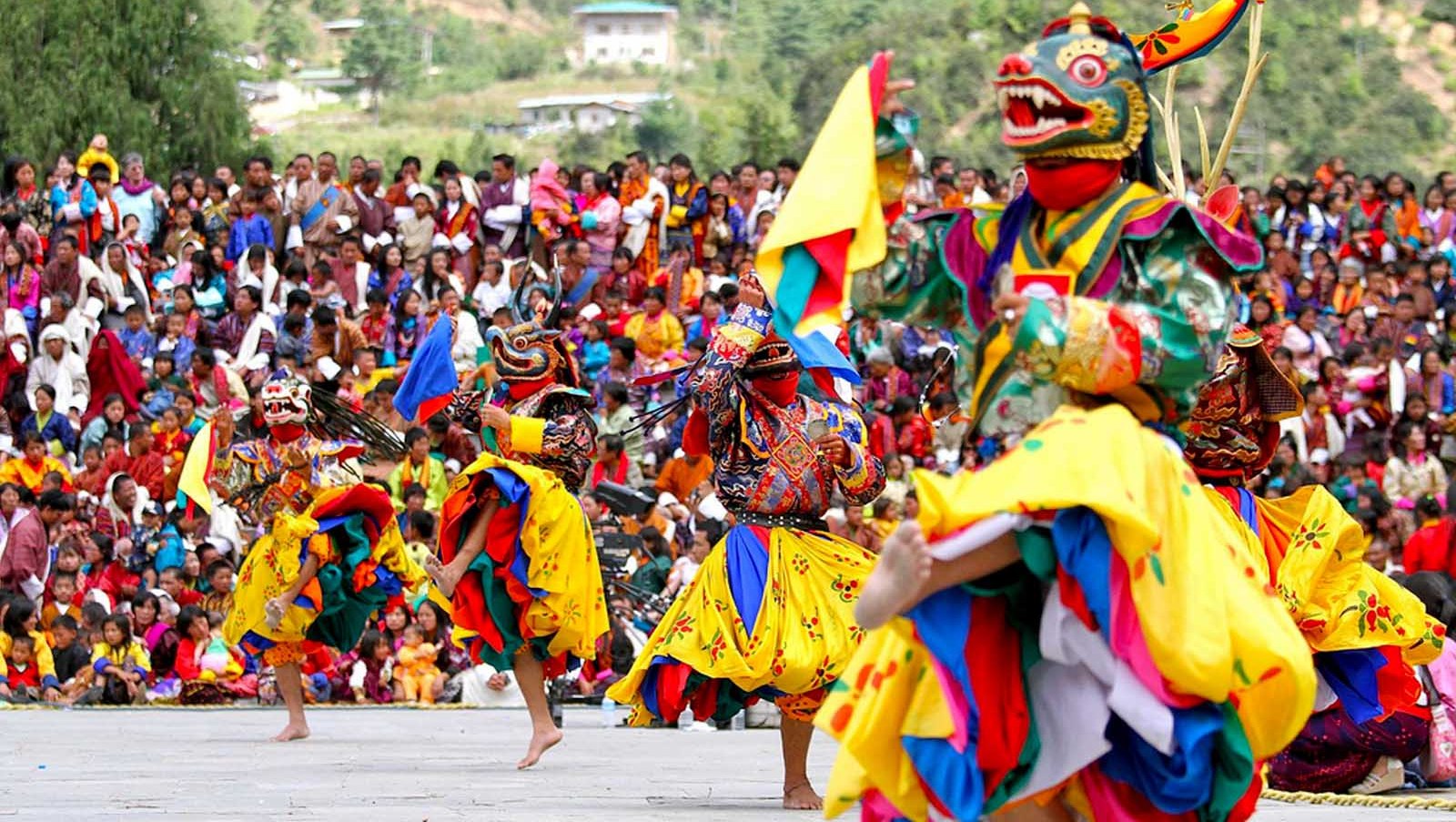
- Punakha Drubchen: This festival commemorates the victory over the Tibetan army in the 17th century and features a dramatic reenactment of the battle. It's held in the magnificent Punakha Dzong, one of the most beautiful dzongs in Bhutan. The festival typically occurs in February, offering visitors a glimpse into Bhutan's historical military traditions and vibrant cultural performances.
- Trongsa Tshechu: Trongsa Tshechu is one of the more significant religious festivals held in the central district of Trongsa in December or January. It features several days of religious dances, including the masked Cham dances, which are believed to confer blessings upon the viewers and drive away evil spirits. The festival also includes the unfurling of a large Thongdrel, a religious tapestry, which is believed to cleanse the viewer of sin.
- Jambay Lhakhang Drup: This festival takes place around October or November at the Jambay Lhakhang in Bumthang, one of the oldest temples in the kingdom. The festival is known for its sacred naked dance (Mewang) and the fire dance (Tercham) performed at night, which serve as highlights that draw both local and international tourists seeking spiritual cleansing and cultural immersion.
- Black-Necked Crane Festival: Held in the Phobjikha Valley in November, this festival celebrates the annual arrival of the black-necked cranes. The festival includes cultural programs such as folk songs, dances, and plays performed by the local school children and monks, celebrating the cranes and raising awareness about the importance of conserving these endangered birds.
- Druk Wangyel Festival: This unique festival is held in December at the Druk Wangyal Lhakhang at Dochula Pass, which offers stunning panoramic views of the Himalayan mountain range. The festival was established to honor His Majesty the Fourth King Jigme Singye Wangchuck and the Bhutanese soldiers. It features a unique series of dances performed by the Royal Bhutan Army rather than monks or laypeople, making it a distinctive cultural event.
Attending these festivals not only allows you to experience the spiritual and communal aspects of Bhutanese culture but also offers the rare opportunity to see Bhutanese artistry, tradition, and community spirit in vibrant display during the quieter off-season months.
Explore Peaceful Cities
Exploring the peaceful cities of Bhutan during the off-season allows you to enjoy their serene beauty and rich history without the usual crowds. Here’s what you can experience in some of Bhutan’s most notable cities:
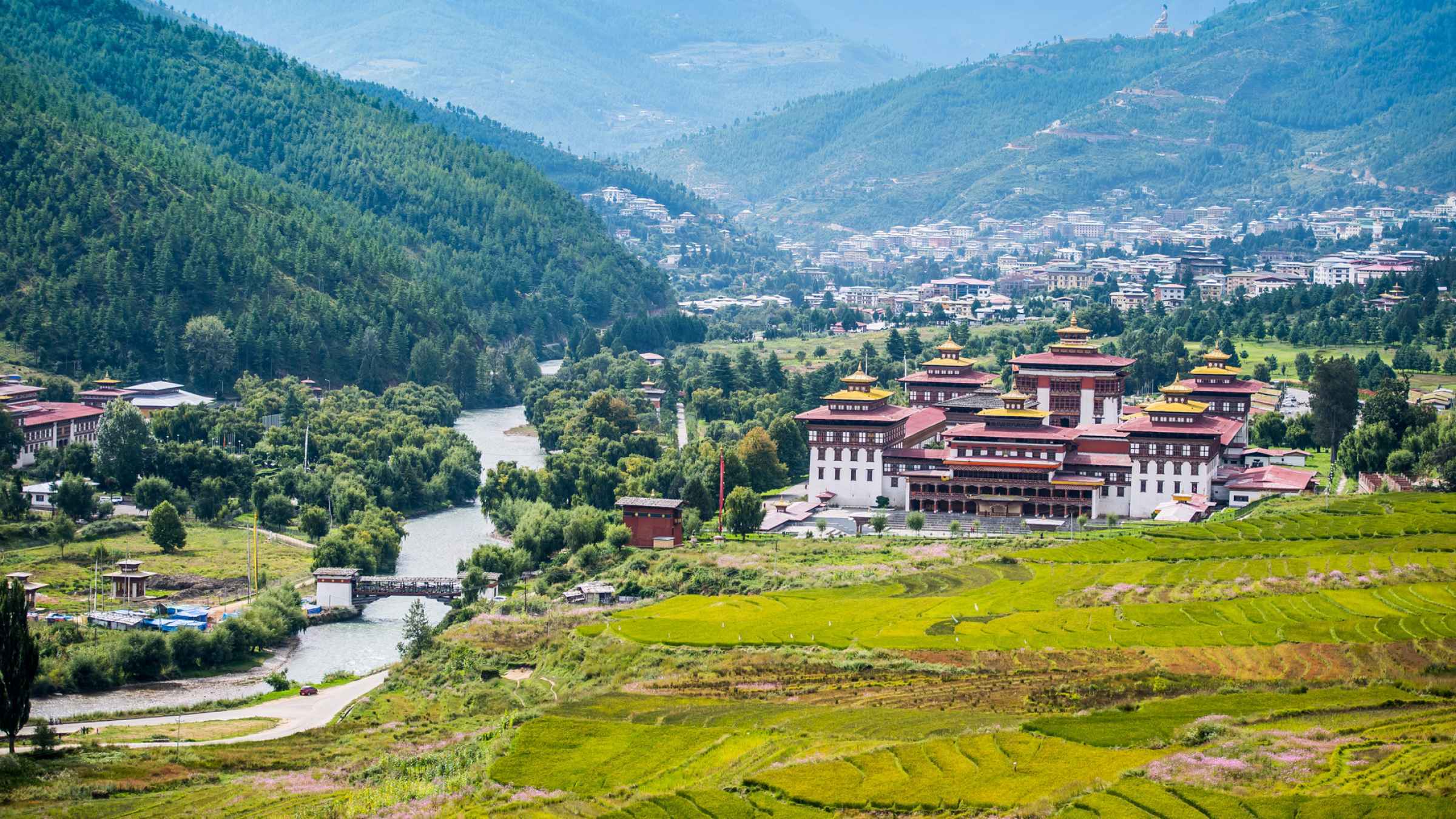
- Thimphu: As the capital and largest city, Thimphu offers a blend of modernity and tradition that is unique in Bhutan. During the off-season, you can comfortably explore landmarks such as the impressive Tashichho Dzong, a fortress that houses the throne room and offices of the King of Bhutan. The Folk Heritage Museum and the National Textile Museum provide insights into Bhutanese cultural and artistic traditions. For those interested in religious sites, the Memorial Chorten, built in memory of the third Bhutanese king, is a focal point for daily religious gatherings and offers a glimpse into local spiritual practices.
- Paro: Paro is a tranquil town known for its stunning landscapes and historic sites. The off-season is an ideal time to visit the iconic Paro Taktsang, also known as the Tiger’s Nest Monastery, which clings dramatically to a cliffside above the Paro Valley. The serene winter or monsoon atmosphere adds a mystical touch to the already breathtaking views. In the town itself, you can explore the Paro Rinpung Dzong, a fortress and monastery that is a fine example of Bhutanese architecture and also serves as a local administrative center.
- Punakha: Punakha, the ancient capital of Bhutan, is less crowded in the off-season, allowing for a more relaxed exploration of its historical and natural sites. The Punakha Dzong, arguably the most beautiful dzong in the country, stands majestically at the confluence of two rivers. It’s particularly stunning when the jacaranda trees surrounding it bloom with purple flowers. Nearby, the suspension bridge over the Po Chu River offers picturesque views and is one of the longest in Bhutan.
- Bumthang: Bumthang, often referred to as the spiritual heart of the country, is quieter during the off-season, which makes it perfect for meditative exploration of its sacred sites. The Jakar Dzong, the Kurjey Lhakhang (where the first three kings of Bhutan are buried), and the Jambay Lhakhang are steeped in myth and history, offering peaceful retreats for those seeking both cultural depth and spiritual solace.
- Haa Valley: Though not a city, the Haa Valley deserves mention for its tranquil rural beauty and cultural significance. Rarely visited by tourists, the valley is especially quiet in the off-season. It's a great place to experience traditional Bhutanese village life, with its intimate temples and panoramic views of the Himalayas. The Haa Summer Festival, showcasing local traditions, crafts, and sports, is a highlight if you're visiting in the summer months.
Exploring these cities and valleys during Bhutan's off-season allows for a deeply personal and unhurried experience, where the pace of life slows down and the cultural heartbeat of the nation can be felt most profoundly.
Indulge in Local Cuisine
Indulging in Bhutanese local cuisine is a delightful way to connect with the kingdom's culture, especially during the off-season when traditional dishes can be enjoyed in their most authentic form. Here are some culinary experiences and dishes you shouldn't miss while visiting Bhutan:
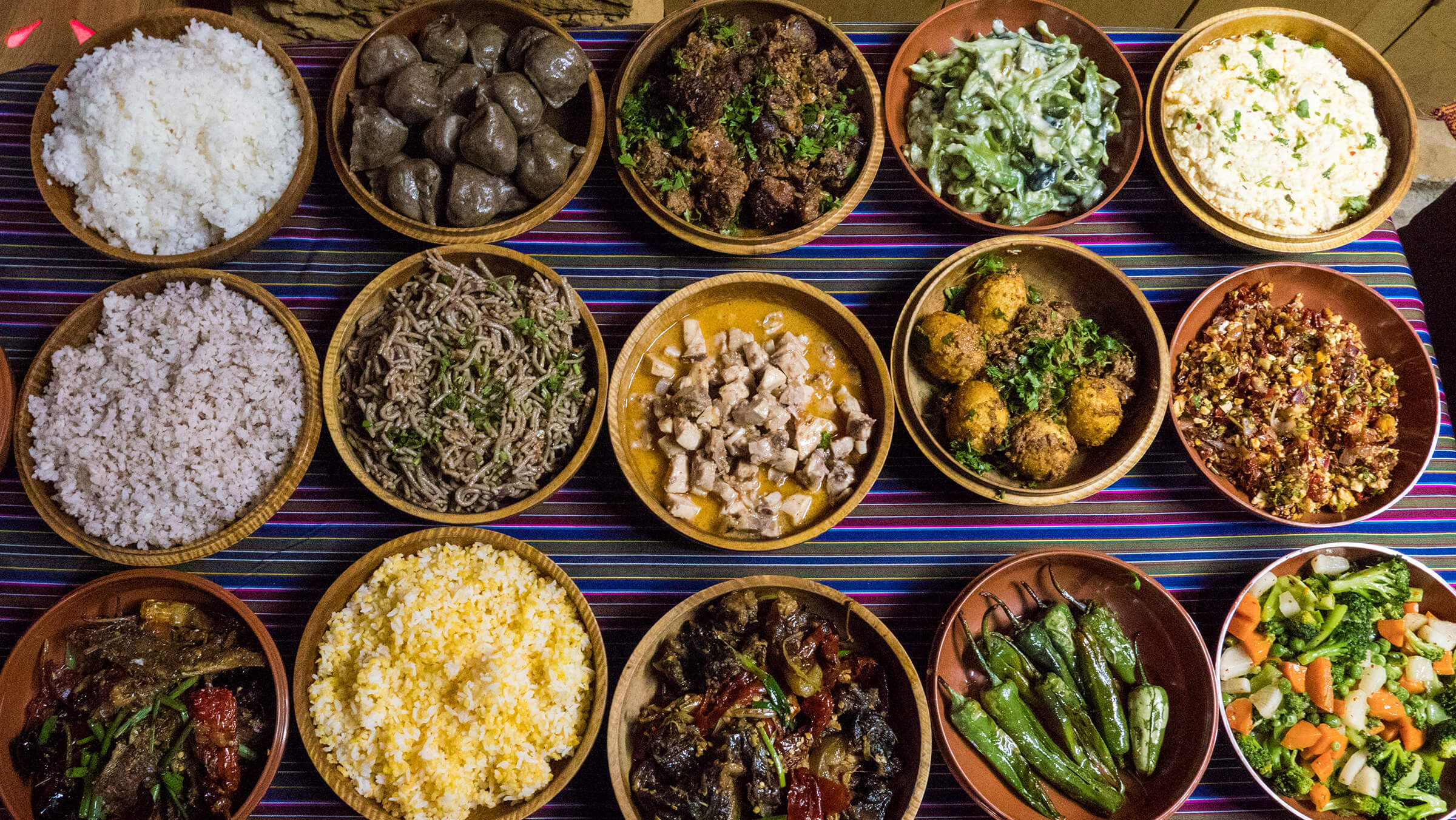
- Ema Datshi: This is the national dish of Bhutan and a must-try for any visitor. It consists of spicy chilies (ema) and delicious local cheese (datshi). This stew is a staple in every meal and varies in heat and ingredients, with some versions adding mushrooms, green beans, or potatoes.
- Jasha Maroo: Jasha Maroo or Maru is a spicy chicken stew. This dish is prepared with diced chicken, tomatoes, garlic, ginger, and onions, and it's seasoned with cilantro and local spices. It's a comforting dish, perfect for the cooler months of the off-season.
- Momos: These Tibetan-style dumplings are very popular in Bhutan. They are filled with pork, beef, or vegetables and served steaming hot with a side of spicy ezay, a local chili sauce. Visiting during the off-season might allow you to try momos filled with seasonal ingredients like wild mushrooms.
- Red Rice: This is a Bhutanese staple. The red rice, which is grown in the Paro Valley, is nutritious and has a nutty flavor. It cooks faster than other whole grains and is often served with dals or curries.
- Suja: Suja, or Bhutanese butter tea, is a traditional drink made from tea leaves, yak butter, and salt. It’s a must for keeping warm and energized during the colder days, especially if you’re engaging in outdoor activities like trekking.
- Phaksha Paa: Phaksha Paa is a pork dish cooked with spicy red chilis, radishes, spinach, and sometimes dried yak cheese. This hearty and warming dish is perfect for winter months, providing the necessary comfort and heat.
- Buckwheat Pancakes: Known locally as 'kule,' these pancakes are made from buckwheat, which is commonly grown in the higher altitudes of Bhutan. These are typically served with honey or a homemade cheese spread.
- Ara: Ara is a traditional alcoholic beverage made from rice, wheat, or corn. It's usually homemade and can be served warm or cold. Trying Ara during a local meal or festival can offer deeper insight into the social and ceremonial life of Bhutan.
- Seasonal Vegetables and Fruits: Depending on the season, local markets in Bhutan offer a variety of fresh fruits and vegetables. During the off-season, you might find apples, oranges, and various kinds of squash, all of which are incorporated into Bhutanese dishes.
Experiencing these dishes not only tantalizes the taste buds but also provides a deeper understanding of Bhutan’s agricultural traditions and culinary heritage. Eating like a local, especially during the off-season, allows for a more immersive experience as you enjoy these warming dishes in the cool, serene environment of Bhutan.
Enjoy Nature Walks and Treks
Enjoying nature walks and treks in Bhutan during the off-season can be a tranquil and invigorating experience, allowing you to appreciate the kingdom’s stunning natural landscapes with fewer tourists around. Whether you're a seasoned trekker or a casual walker, Bhutan offers a range of paths that cater to all levels of experience and interest. Here are some recommended treks and nature walks to consider:
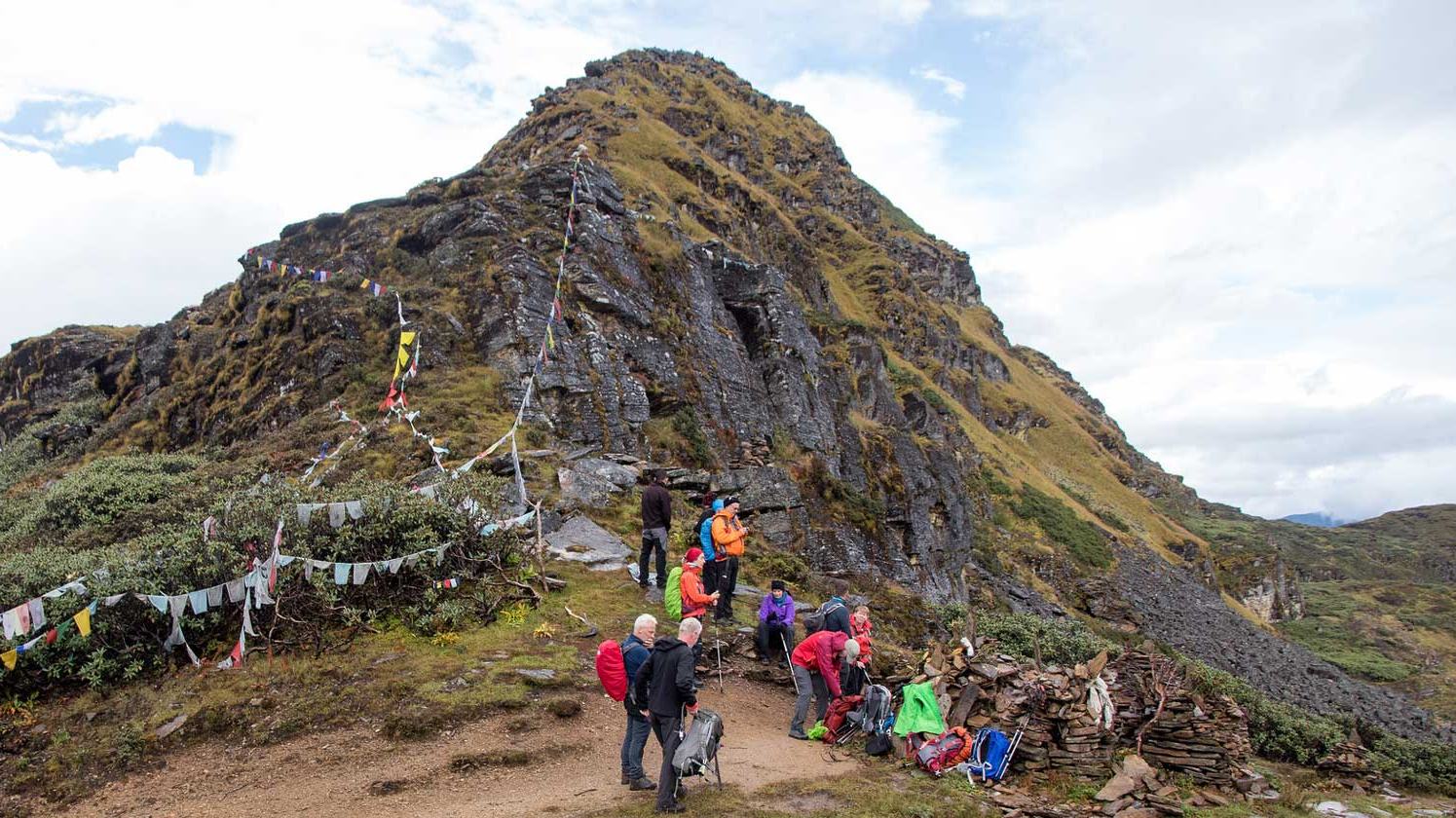
- Druk Path Trek: The Druk Path Trek is one of the most popular short treks in Bhutan, connecting the valleys of Paro and Thimphu. It features stunning high-altitude lakes, ancient lhakhangs (temples), and breathtaking views of the Himalayas. The trek usually takes about 5 days and is ideal in the off-season months when the paths are less crowded and the views are unobstructed.
- Gangtey Nature Trail: For those looking for a lighter adventure, the Gangtey Nature Trail in Phobjikha Valley offers a pleasant and relatively easy walk. This trail takes you through flower meadows, past quaint villages, and into the woods, ending at the Black-Necked Crane Information Centre. The valley is particularly beautiful during the off-season, when it's lush and vibrant with seasonal colors.
- Bumdra Trek: Known for its sacred sites and stunning high-altitude camping, the Bumdra Trek is an overnight trek that offers an incredible view of the Himalayas and the Paro valley. The trek includes a visit to the famous Tiger’s Nest Monastery before ascending to Bumdra Monastery where you camp under a million stars.
- Chele La Nature Trek: This day trek starts from the Chele La pass, which is one of the highest motorable points in Bhutan. The trek offers panoramic views of the surrounding mountains and valleys with a good chance of spotting yak herders in action. It’s an excellent way for off-season visitors to experience Bhutan’s high-altitude landscapes without committing to a multi-day trek.
- Haa Valley Walk: The serene Haa Valley, less frequented by tourists, is perfect for leisurely walks through its small villages and along the Haa Chu River. The valley is surrounded by lush forested hills and offers a peaceful retreat from the more touristy areas of Bhutan.
- Jomolhari Trek: For the more adventurous, the Jomolhari Trek is a challenging route that offers spectacular views of Mount Jomolhari, Bhutan's second-highest mountain. This trek is best attempted just before or after the peak season months, offering solitude and a pristine trekking environment.
- Nature Walks Around Thimphu: For a more relaxed day, consider taking nature walks around Thimphu. The area around the Motithang Takin Preserve is ideal for spotting Bhutan's national animal, the takin, and for enjoying some light walking that doesn’t require any special preparation or equipment.
These treks and walks not only showcase Bhutan’s incredible natural beauty but also provide a chance to witness its rich flora and fauna, especially during the off-season when nature is in full bloom or freshly dusted with snow.
Bird Watching
Bird watching in Bhutan is a rewarding experience, particularly in the off-season when migratory patterns bring unique species to the region, and fewer tourists mean quieter observation settings. Bhutan is home to over 770 species of birds, some of which are rare and endangered. Here’s a guide to making the most of your bird watching adventure in this Himalayan kingdom:
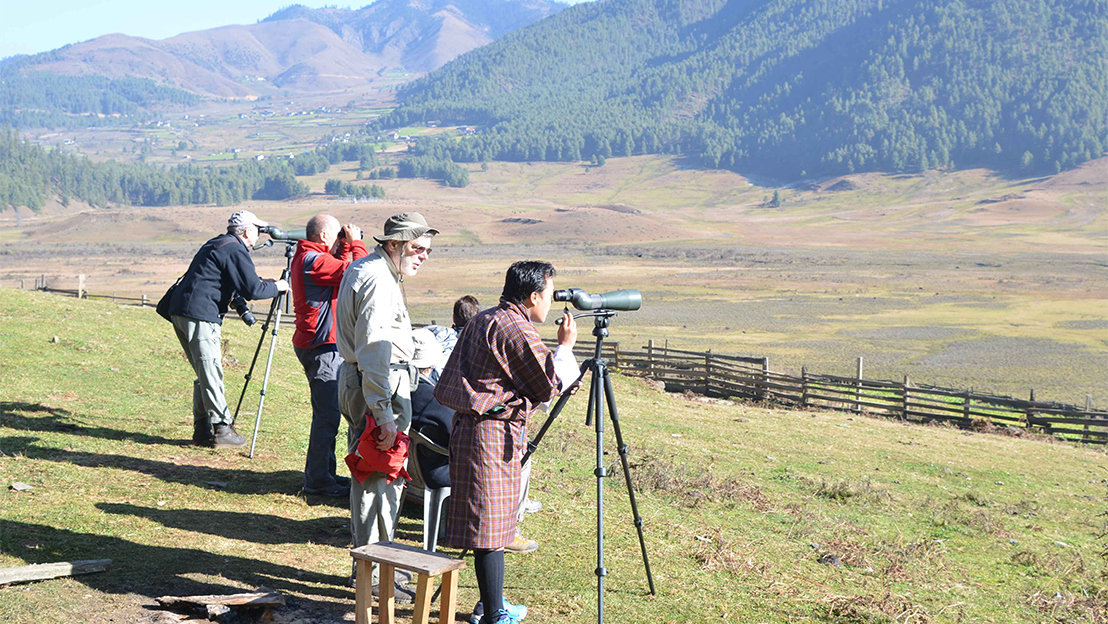
- Phobjikha Valley: The Phobjikha Valley is famous for its winter visitors, the black-necked cranes. These majestic birds migrate from the Tibetan Plateau to Bhutan in late October and stay until February. The valley hosts the annual Black-Necked Crane Festival in November to celebrate their arrival. Observing these cranes, with their elegant dances and distinctive calls, is a highlight for any birdwatcher.
- Bumdeling Wildlife Sanctuary: Located in the northeastern part of Bhutan, Bumdeling Wildlife Sanctuary is another prime spot for watching black-necked cranes. Besides the cranes, the sanctuary is home to many other species, making it a hotspot for bird watchers keen on spotting a wide variety of Himalayan birds in their natural habitat.
- Royal Manas National Park: As one of the oldest and richest conservation areas in Bhutan, Royal Manas National Park offers bird watchers a chance to see rare species like the Rufous-necked hornbill, Bengal florican, and the great hornbill. The diversity of the park’s ecosystems, ranging from tropical forests to grasslands, supports an incredible variety of bird life.
- Torsa Strict Nature Reserve: This reserve is unique as it remains largely unexplored and is only accessible with special permission, which helps maintain its pristine environment. Birders who gain access can spot species that are not easily seen elsewhere in Bhutan, such as the beautiful nuthatch and Ward’s trogon.
- Chele La Pass: Situated between Paro and Haa, Chele La Pass is the highest motorable pass in Bhutan and offers birders spectacular panoramic views and the chance to see high-altitude species like blood pheasants, Kalij pheasants, and Himalayan monals. The pass is especially good for bird watching during the early morning when the birds are most active.
- Zhemgang: Known for its diverse bird population, Zhemgang is particularly appealing to those looking to spot the elusive Bengal florican. The region’s broadleaf forests are also home to the hornbills, three different species of which can be seen here, making it an essential destination for birdwatching enthusiasts.
Whether you're an experienced birder or a casual observer, Bhutan’s diverse ecosystems and spectacular natural landscapes provide a perfect backdrop for bird watching, especially during the off-season when the environment is lush and the avian inhabitants are abundant.
Photography Opportunities
Bhutan offers a treasure trove of photography opportunities, especially during the off-season when the landscapes are marked by dramatic skies and fewer tourists. This serene atmosphere allows photographers to capture the essence of Bhutan’s natural beauty and cultural richness without interruption. Here are some top spots and subjects for photographers visiting Bhutan:
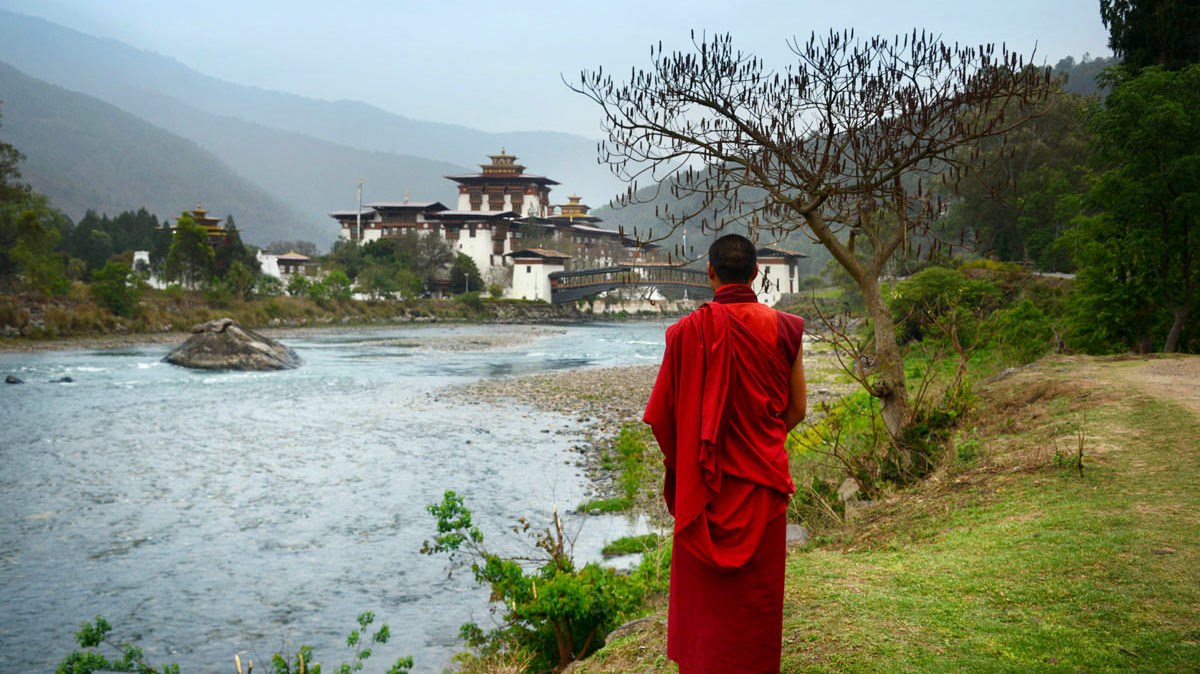
- Paro Taktsang (Tiger’s Nest Monastery): Perched dramatically on a cliff 900 meters above the Paro Valley, the iconic Tiger's Nest is a must-photograph location in Bhutan. The best shots can be taken early in the morning during the off-season to capture the mystical fog or the striking play of sunlight as the day progresses.
- Punakha Dzong: Known as the Palace of Great Happiness, Punakha Dzong is strikingly beautiful, especially in spring when the lilac-colored jacaranda trees are in bloom against the backdrop of its white-washed walls and the clear blue sky. During the off-season, the surrounding scenery of snow or lush greenery offers a unique perspective for photographers.
- Dochula Pass: Located on the way from Thimphu to Punakha, Dochula Pass offers a panoramic view of the Himalayan mountain range. The 108 memorial chortens against the backdrop of snow-covered mountains provide a perfect subject for landscape photography, especially during the clear, crisp days of the off-season.
- Phobjikha Valley: This glacial valley is known for its scenic splendor and the winter home of black-necked cranes. Photographing these elegant birds in their natural habitat, with the valley’s rolling hills as the backdrop, is a highlight. The off-season also brings stunning light and cloud formations over the valley, ideal for dramatic landscape shots.
- Bumthang Valley: Often referred to as the spiritual heart of the kingdom, Bumthang is dotted with ancient temples, monasteries, and stupas. The valley’s serene environment and architectural beauty provide ample opportunities for cultural and architectural photography.
- Thimphu: The capital city combines traditional Bhutanese style with modern life. Key photographic subjects include the Tashichho Dzong, particularly beautiful during the early evening when it's illuminated; the bustling Centenary Farmers’ Market; and the National Memorial Chorten, a hub of daily religious activity.
- Haa Valley: Less frequented by tourists, Haa Valley offers untouched landscapes and a glimpse into the traditional lifestyle of nomadic herders. Seasonal changes bring distinct character to the valley, with snow in winter or lush greenery in summer, making it ideal for capturing the essence of rural Bhutanese life.
- Archery Grounds: Archery is the national sport of Bhutan and attending an archery tournament offers colorful, dynamic photographic opportunities. Capture the vibrancy of the competitors' traditional dress and the festive atmosphere that surrounds these events.
Photographing Bhutan in the off-season not only allows you to capture its landscapes and cultural events without the crowds but also highlights the changing moods of nature, offering diverse photographic experiences.
Cultural Tours
Cultural tours in Bhutan during the off-season provide an intimate glimpse into the daily life and traditions of one of the most secluded and culturally rich countries in the world. These tours are specially designed to deepen the understanding of Bhutanese culture through immersive experiences that highlight the country's heritage, architecture, spirituality, and community life. Here are some of the key aspects of cultural tours in Bhutan that you can expect to explore:

- Dzong Visits: Dzongs are traditional fortified monasteries that serve both as religious and administrative centers. Each district in Bhutan has a dzong, and they are pivotal in understanding Bhutanese culture. Tours often include visits to famous dzongs like Paro Dzong, Punakha Dzong, and Trongsa Dzong, especially captivating during the off-season when they are less crowded and more serene.
- Monastery Tours: Bhutan is home to numerous ancient monasteries that offer insights into the spiritual life of the Bhutanese people. Key monasteries like Taktsang Monastery (Tiger’s Nest) in Paro, and Kurjey Lhakhang in Bumthang, are not just architectural marvels but also spiritual hubs that provide a deeper understanding of Buddhism in Bhutan.
- Traditional Arts and Crafts: A visit to the Institute of Zorig Chusum, or the School of Traditional Arts in Thimphu, allows visitors to see young artisans being trained in traditional Bhutanese arts such as painting, sculpture, wood carving, and embroidery. Similarly, tours to local handicraft markets or workshops in places like Thimphu and Bumthang can provide insights into the craftsmanship involved in making Bhutanese textiles, wooden bowls, and paper.
- Village Homestays: To truly experience Bhutanese culture, nothing compares to a village homestay. This allows visitors to live with a Bhutanese family, participate in daily chores, and enjoy traditional meals. It's a profound way to connect with local people and understand their way of life, especially during the off-season when families have more time to engage with guests.
- Festival Participation: While major festivals like Paro Tshechu and Thimphu Tshechu are often crowded, visiting Bhutan during the off-season might coincide with smaller local festivals that are equally vibrant and less touristy. Participating in these festivals offers a chance to see traditional dances, music performances, and religious rituals up close.
- Culinary Experiences: Bhutanese cuisine is an integral part of its culture. Cultural tours often include cooking classes or meals prepared by local hosts, where you can learn about and taste dishes like Ema Datshi (chili cheese stew), Momos (dumplings), and Red Rice. Experiencing these flavors in the home of a Bhutanese family provides a warm insight into the everyday life and hospitality of the Bhutanese.
- Archery and Traditional Games: Witnessing an archery competition or participating in local games such as Khuru (darts) can be a highlight of any cultural tour. These activities are not only fun but also important social events that bring communities together.
- Spiritual and Wellness Experiences: Many tours include sessions of meditation and discussions on Buddhist philosophy, often led by monks or spiritual leaders. Visiting meditation centers or spending time in retreats in monasteries like those in Bumthang can provide a reflective and soul-soothing experience.
Cultural tours in Bhutan, especially during the off-season, offer the unique advantage of fewer tourists, more personal interactions, and a relaxed atmosphere to deeply engage with the rich tapestry of Bhutanese culture. These tours are not just about seeing new places but truly experiencing a way of life that is rooted in Buddhist traditions and Himalayan heritage.
Relax in Hot Springs
Relaxing in Bhutan's hot springs, known locally as 'Tshachus', is an integral part of Bhutanese culture, believed to have therapeutic properties that can heal various ailments. The off-season, with its cooler weather, is an especially good time to indulge in this soothing experience. Here are some of the most renowned hot springs in Bhutan where you can unwind and rejuvenate:
.jpg)
- Gasa Tshachu: Located in the remote Gasa district, Gasa Tshachu is perhaps the most famous hot spring in Bhutan. Nestled along the banks of the Mo Chhu River, these hot springs are accessible via a moderately challenging trek through beautiful forests and hills. The springs are frequented by locals and tourists seeking relief from joint pains, arthritis, and skin conditions. The setting is tranquil, surrounded by mountains, offering a perfect retreat to relax and soak in the natural mineral waters.
- Chubu Tshachu: Situated in the Punakha district, Chubu Tshachu is another popular hot spring, especially among the locals. It's located near the banks of the Pho Chhu River and is less touristy compared to Gasa. The journey to Chubu Tshachu includes a scenic trek, making it a delightful experience for those who appreciate quieter and more secluded environments.
- Duenmang Tshachu: Located in the southern part of Bhutan, Duenmang Tshachu is renowned for its beautiful setting and therapeutic benefits. The hot spring is right beside a river, providing a serene ambiance. It's particularly popular among locals from nearby districts and is believed to cure body aches and skin diseases.
- Menjong Tshachu: This hot spring is situated in the Sarpang district and is known for its accessibility compared to others. Menjong Tshachu is popular among both Bhutanese and tourists for its healing properties and the lush vegetation surrounding it, which makes for a soothing natural environment perfect for relaxation.
- Gelephu Tshachu: In the southern foothills of Bhutan, Gelephu Tshachu is a hit among visitors due to its tropical climate and the additional attractions around. This hot spring is easier to reach by road and is located in a lowland area, making it ideal for those who prefer not to trek. The hot springs have separate pools for men and women and are a great way to relax after exploring the nearby regions.
Visiting these hot springs during Bhutan's off-season not only provides a peaceful escape from the colder weather but also offers a unique insight into an important aspect of Bhutanese traditional medicine and culture.
Enjoy the Advantages of Low Season Travel
Traveling to Bhutan during the low season, which typically includes the monsoon months of June to August and the colder months of December to February, presents numerous advantages for those looking to explore this serene Himalayan kingdom with fewer interruptions and a more personal connection to its culture and landscapes. Here are some of the key benefits of visiting Bhutan during these quieter months:
- Fewer Tourists: One of the most significant benefits of traveling during the off-season is the reduction in tourist numbers. This means less crowded attractions and more opportunity to engage with locals in a meaningful way. Sites like the Tiger's Nest Monastery in Paro, Punakha Dzong, and various temples in Thimphu are less crowded, allowing for a more tranquil and intimate experience.
- Reduced Costs: Traveling during the off-season can also be cost-effective. Many hotels and tour operators offer lower rates to attract visitors in these quieter months. This can result in savings on accommodation, tours, and sometimes even flights into and out of the country.
- Authentic Experiences: With fewer tourists around, you’re more likely to have authentic interactions with locals. This is a fantastic time to delve into Bhutanese culture, whether it's visiting a local home for dinner, participating in a village festival not commonly attended by tourists, or simply having more in-depth conversations with guides and residents.
- Unique Photographic Opportunities: The monsoon season brings lush greenery and vibrant life to Bhutan’s forests and valleys, while winter can cloak the landscape in mystical fog and occasional snow. Both seasons offer unique and stunning photographic opportunities that differ from the often-seen spring and autumn scenes.
- Pleasant Weather for Some Activities: Despite being the monsoon season, the rain in Bhutan is usually not constant and can provide refreshing breaks from the otherwise consistent weather. The rains bring out the rich colors of the Bhutanese landscape, making hikes and walks particularly beautiful, albeit a bit more challenging. In winter, the cooler temperatures are ideal for trekking, as long as you're prepared for the cold.
- Easier Access to Popular Spots: With fewer tourists, you'll have easier access to popular cultural spots, museums, and restaurants. You might find it easier to book appointments with popular local artisans or tours that might be booked solid in peak seasons.
- Participation in Special Festivals: Several unique cultural festivals occur during these months, such as the Black-Necked Crane Festival in November and various local Tshechus (religious festivals) that are less known but equally fascinating. These events are less commercial and offer a deeper glimpse into the spiritual and communal life of the Bhutanese people.
- Enjoy Seasonal Activities: Each season brings its own set of activities that can be enjoyed to their fullest. For instance, hot springs in winter are particularly enjoyable, and the lush landscapes during the monsoon are perfect for botanical enthusiasts.
Traveling to Bhutan during the off-season not only offers practical benefits like cost savings and fewer crowds but also enriches your travel experience by offering deeper cultural immersion and unique natural beauty not observed during the peak seasons.
Travel Tips
Traveling to Bhutan offers a unique experience that blends deep cultural immersion with breathtaking natural beauty. To make the most of your journey in this Himalayan kingdom, here are some essential travel tips:
- Obtain the Necessary Travel Documents: Bhutan requires all tourists (except citizens of India, Bangladesh, and Maldives) to obtain a visa before arriving. All visas are processed through an authorized tour operator and are issued only after the full payment of your trip, which includes a daily fee covering accommodation, transportation, a guide, and food.
- Book Through a Licensed Bhutanese Tour Operator: Independent travel is not permitted in Bhutan. You must book your trip through a licensed Bhutanese tour operator or one of their international partners. This package includes a minimum daily package rate set by the Bhutanese government, which includes most of your travel essentials.
- Plan for the Altitude: Many of Bhutan's attractions are at high altitudes. If you're planning to trek or spend time in higher-altitude areas like Thimphu and Paro, consider acclimatizing for a few days to prevent altitude sickness.
- Pack Appropriately: The weather in Bhutan can vary significantly between regions and seasons. Pack layers of clothing, including warm jackets and rainproof gear, regardless of when you plan to visit. Don’t forget sturdy hiking boots if you plan on trekking.
- Respect Local Customs and Traditions: Bhutan has a deep-rooted culture with many customs and traditions. Dress modestly, especially when visiting religious sites (cover your arms and legs), and always ask permission before taking photos of people or religious ceremonies.
- Be Prepared for a Digital Detox: While Bhutan is modernizing, Wi-Fi can still be unreliable and is not widely available, especially in remote areas or on treks. This can be an excellent opportunity for a digital detox.
- Carry Cash: While major hotels in larger cities accept credit cards, many places, especially in rural areas, do not. ATMs are available but can be unreliable. It’s advisable to carry sufficient cash in the local currency or US dollars.
- Stay Healthy: Travel insurance is a must when visiting Bhutan, especially if you plan on engaging in trekking or other adventurous activities. Also, be cautious with food and water — stick to bottled water and well-cooked meals.
- Learn a Few Dzongkha Phrases: While English is widely spoken in schools and used in government dealings, learning a few phrases in Dzongkha, the national language, can be helpful and is appreciated by the locals.
- Embrace the Pace: Bhutan is known for its laid-back approach and emphasis on Gross National Happiness. Take the time to absorb the serene environment, interact with the friendly locals, and immerse yourself in the peaceful rhythm of Bhutanese life.
By following these tips, you can enhance your experience in Bhutan, ensuring a memorable, respectful, and enriching visit to this unique country.
Visiting Bhutan during the off-season offers a unique opportunity to experience the tranquil beauty and rich cultural heritage of this Himalayan kingdom without the usual crowds. From attending vibrant winter festivals and indulging in the hearty flavors of Bhutanese cuisine to exploring peaceful cities and enjoying serene nature walks, the off-season presents a chance to engage more deeply with the local culture and landscape. Whether you're soaking in the therapeutic Gasa hot springs, capturing the mystical winter scenery through your lens, or participating in unique cultural events, Bhutan during the off-season provides a quiet, intimate, and deeply rewarding travel experience. Embrace the slower pace and discover Bhutan's hidden gems in a way that few get to see, making your journey an unforgettable exploration of this enchanting country.
FAQs on Things to do in Bhutan in off season
Q: What is considered the off-season in Bhutan?
A: The off-season in Bhutan generally includes the monsoon months from June to August and the colder months from December to February. These periods typically see fewer tourists due to the weather conditions.
Q: Are there any special festivals worth attending in the off-season?
A: Yes, several unique festivals occur during the off-season that offer deep cultural insights. Notable ones include the Black-Necked Crane Festival in November, the Punakha Drubchen in February, and the Jambay Lhakhang Drup in November. These festivals showcase traditional dances, religious rituals, and local customs.
Q: What are the best activities to do in Bhutan during the off-season?
A: Off-season activities in Bhutan include trekking on less crowded trails, bird watching (especially the migratory black-necked cranes), enjoying the serene ambiance of major cities like Thimphu and Paro, and experiencing Bhutanese hot springs which are particularly enjoyable during the cooler months.
Q: Is it safe to travel to Bhutan during the monsoon?
A: Traveling during the monsoon is safe, but it's advisable to be prepared for occasional disruptions due to rainfall. Roads can be slippery, and visibility may be reduced during heavy rains. Always check with your tour operator for the most current travel advice and consider appropriate travel insurance.
Q: What are the advantages of visiting Bhutan in the off-season?
A: Visiting during the off-season allows you to enjoy Bhutan with fewer tourists, potentially lower costs, and a more relaxed travel experience. It's also an opportunity to see Bhutan’s cultural events that are less commercialized and more intimate.
Q: How should I dress when visiting Bhutan in the off-season?
A: Dressing in layers is recommended as the weather can vary significantly between day and night and between different regions. Warm clothing is essential, especially during the winter months, and waterproof gear is advisable during the monsoon.
Q: Can I go trekking in Bhutan during the off-season?
Yes, certain treks are accessible and can be incredibly rewarding during the off-season. For example, the Druk Path Trek can be done in winter, offering clear skies and fewer travelers on the path. However, always consult with your tour operator about the suitability of specific treks during your visit.
Q: What kind of wildlife can I see in Bhutan during the off-season?
A: The off-season is an excellent time for wildlife enthusiasts, particularly for bird watching. The Phobjikha Valley, in particular, becomes a haven for black-necked cranes during the winter months. Other wildlife sightings can include barking deer, red pandas, and various endemic species.
Q: Are hotels and restaurants open during the off-season in Bhutan?
A: Most hotels and restaurants in major towns remain open year-round. However, some establishments in more remote areas may have limited operations depending on the season. It's best to confirm with your tour operator about the availability of accommodations and dining options during your travel dates.
Q: What are the health considerations for traveling to Bhutan in the off-season?
A: The main health considerations include preparing for the cold in winter and protecting against mosquitoes during the monsoon. Visitors should also be mindful of altitude sickness, especially when trekking in higher regions. Ensuring you have adequate health insurance coverage that includes emergency evacuation is also recommended.
If you are looking for tour packages in Bhutan please click here
If you need any further information, please contact us, Email: at [email protected] , Phone (Whatsapp or Viber) +975-1755-663
